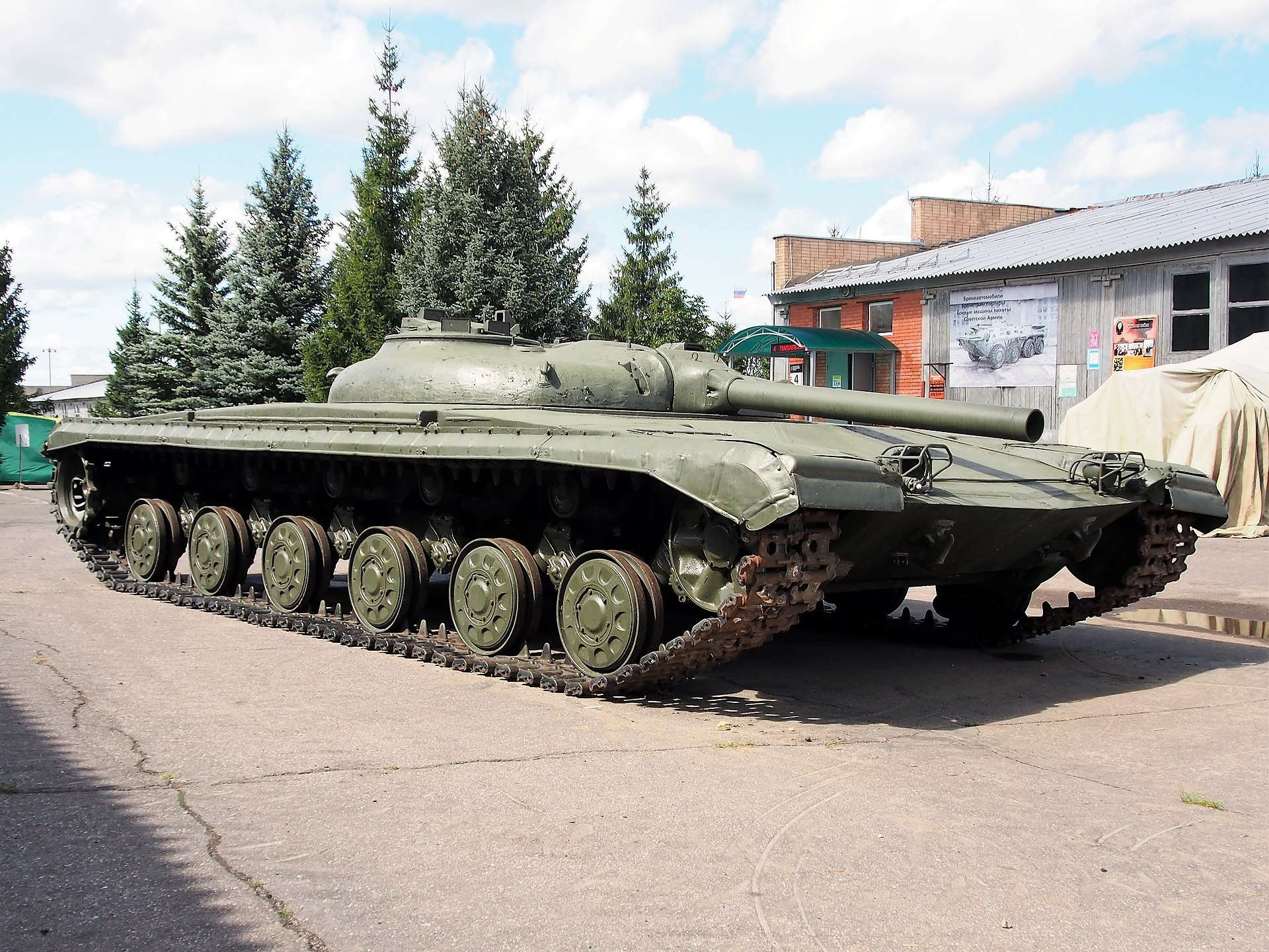Behold the flattest tank around: the Object 775. This strange and obscure vehicle was a missile tank developed by the Soviet Union in the 1960s. Those who do know of its existence likely do so in part because of its comical proportions.
Its low height was possible as it did not have a conventional smoothbore or rifled gun, instead it used a missile system as its primary armament.
This is the concept of the missile tank, something the Object 775 helped to pioneer.
Soviet Premier Nikita Kruschev was a major driving force behind the creation of these tanks, which he used to help kill off the heavy tank.
Despite its small size, low weight and tank-killing missiles, the Object 775 was not a successful design.
Background
The Soviet Union emerged from WWII with a passionate love for heavy tanks. After all, they had kicked German-butt during the war.
Their development continued throughout the 1950s, producing tanks like the T-10 and arguably culminating in the “nuke-resistant” Object 279.
However these types of tanks were the descendents of WWII designs, and would have likely suffered on the battlefields of the Cold War. In this new era, battles would would be dictated by speed and technology.
 The Object 279 is considered by many to be the final Soviet heavy tank. Image by Aleksandr Markin CC BY-SA 2.0.
The Object 279 is considered by many to be the final Soviet heavy tank. Image by Aleksandr Markin CC BY-SA 2.0.
Their obsolescence was compounded by the advancements of anti-tank guided missiles (ATGMs). These could be mounted on lightweight vehicles and were easily capable of destroying the most heavily armed tanks on the battlefield.
Suddenly, a truck could carry MBT-level firepower. Heavy tanks were becoming harder to justify.
The final nail in the coffin came in 1960 – not from new technology, but by Nikita Kruschev.
Kruschev had a personal dislike of heavy tanks. He believed they were too slow, too expensive and lacked enough extra protection to justify this. Furthermore, their size and weight was a burden on logistical and transport systems, particularly bridges.
Meanwhile, he was extremely fond of ATGMs, which could be mounted on most vehicles and knock out enemy tanks from extreme ranges.
He envisaged large numbers of cheap missile tanks that could encircle and obliterate western armor.
After a heavy tank demonstration in 1960, Kruschev brought the hammer down, declaring that any future tanks must not exceed 37 tonnes.
With most of the USSR’s heavy tanks weighing in excess of 50 tonnes, Kruschev’s decision killed off this infamous breed of tanks.
Smaller tanks were now a priority.
Missile Tanks
Attention turned to missile tanks, resulting in a series of vehicles that carried missiles as their primary weapon.
The IT-1 was one of the earliest. It was based on the T-62 chassis and had been under development since the 1950s. The IT-1 featured a “pop-up” missile system, which literally popped up through a door in the turret roof.
A problem with these systems was that they had a minimum arming distance between 300 and 500 meters, and each shot was extremely expensive.
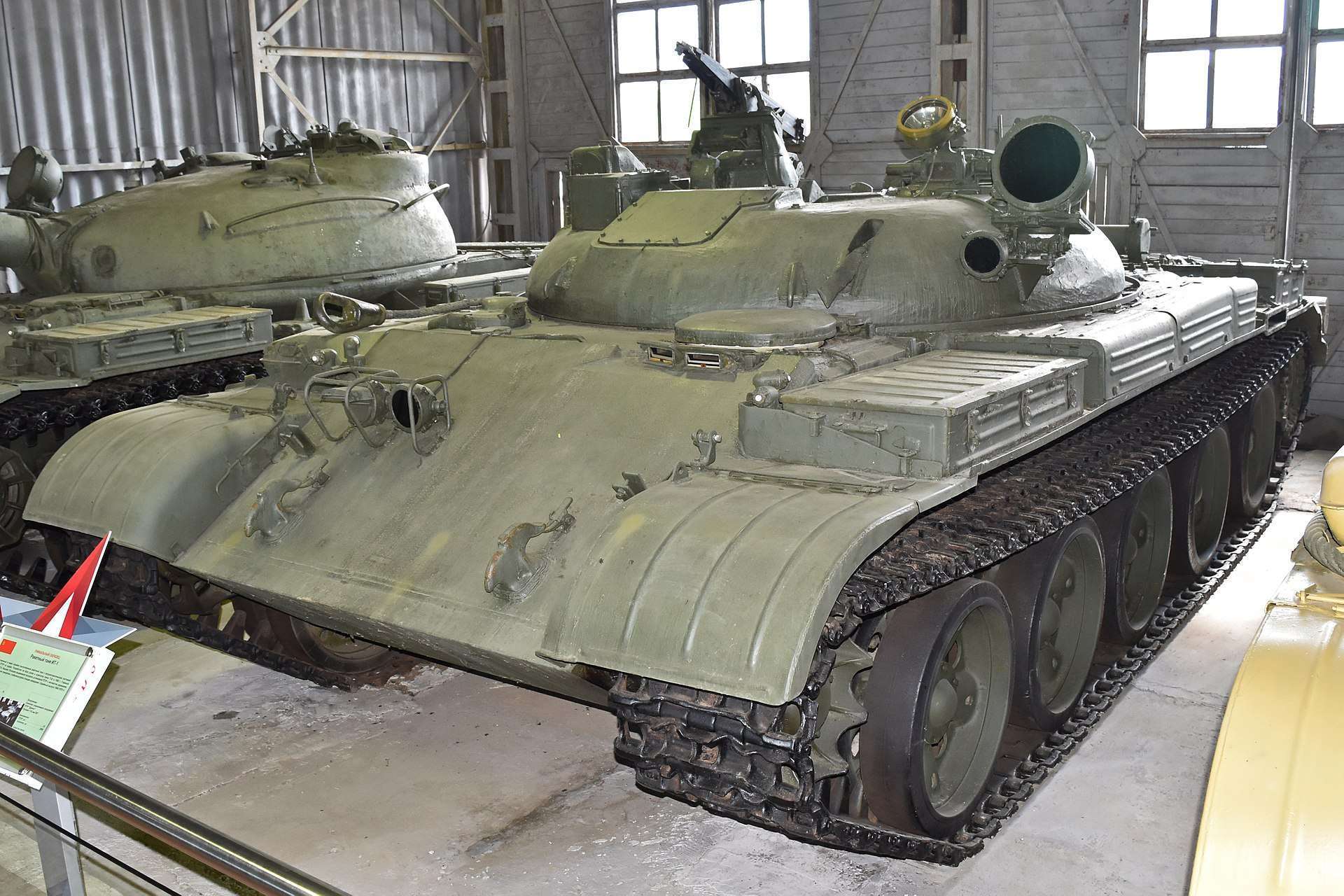 The Object 150, which in service as the IT-1. Image by Alan Wilson CC BY-SA 2.0
The Object 150, which in service as the IT-1. Image by Alan Wilson CC BY-SA 2.0
This meant if a missile tank was faced with a soft target like a truck, it would have to use a massively expensive missile to kill it. Alternatively, the tank would be too close to use its missiles.
To solve this, Soviet designers created two missile tanks based on the T-64.
Their exact development dates vary between sources, but it was around 1961 and 1962.
One of these was the Object 287, a low profile vehicle that carried a pop-up missile system and two 73mm smoothbore guns for use against soft and close range targets.
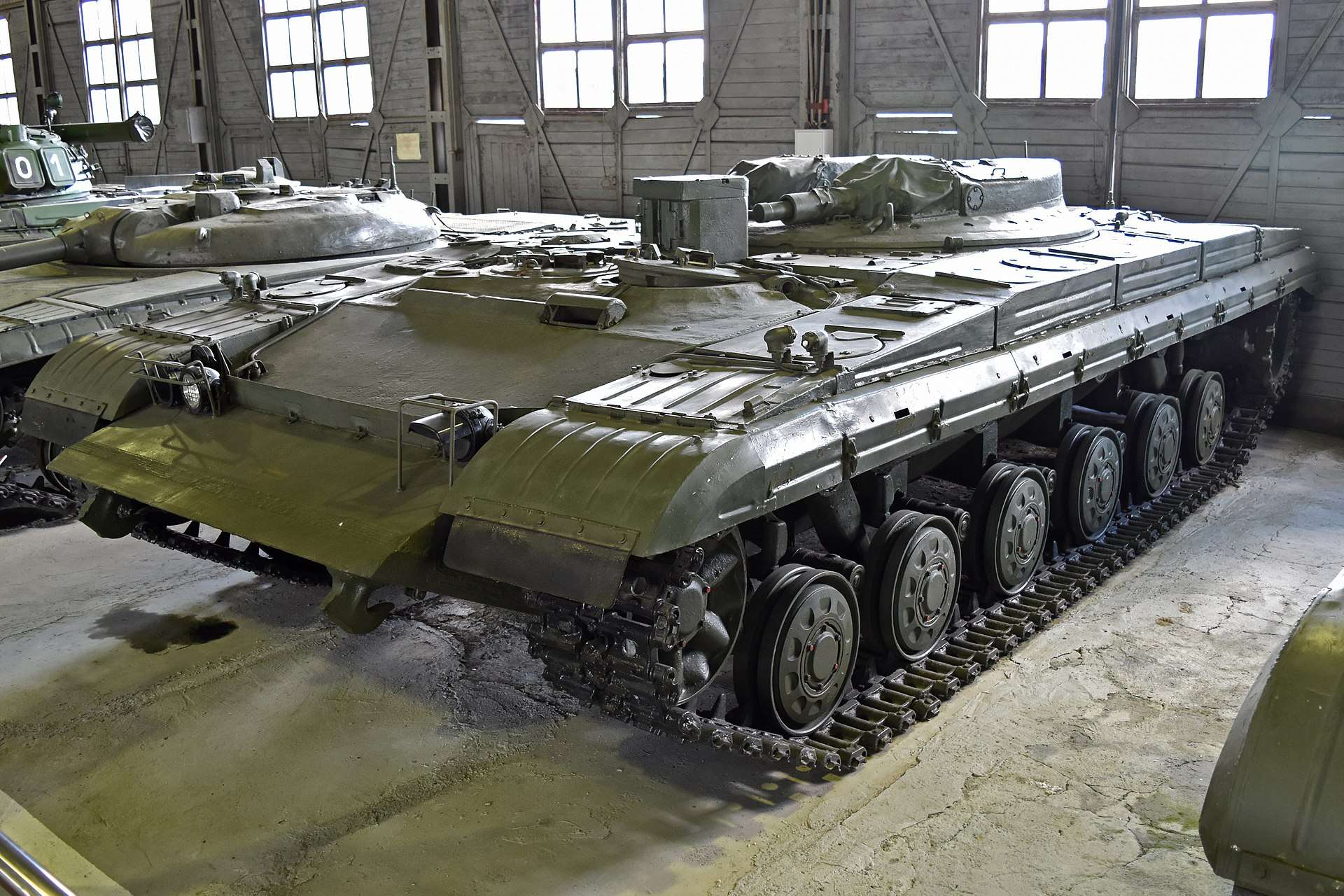 Object 287 was armed with two 73 mm smoothbore guns and a missile system. Image by Alan Wilson CC BY-SA 2.0.
Object 287 was armed with two 73 mm smoothbore guns and a missile system. Image by Alan Wilson CC BY-SA 2.0.
The other was the Object 775, the focus of this article.
Object 775
The Object 775 is not a well known vehicle, but it broke new ground and is certainly deserving of more appreciation for this.
Almost every aspect is bizarre. It has a crew of two, extremely good armor for its size and is very, very low.
Both crew members (driver and commander/gunner) were situated in the ultra-low profile, pancake-like turret.
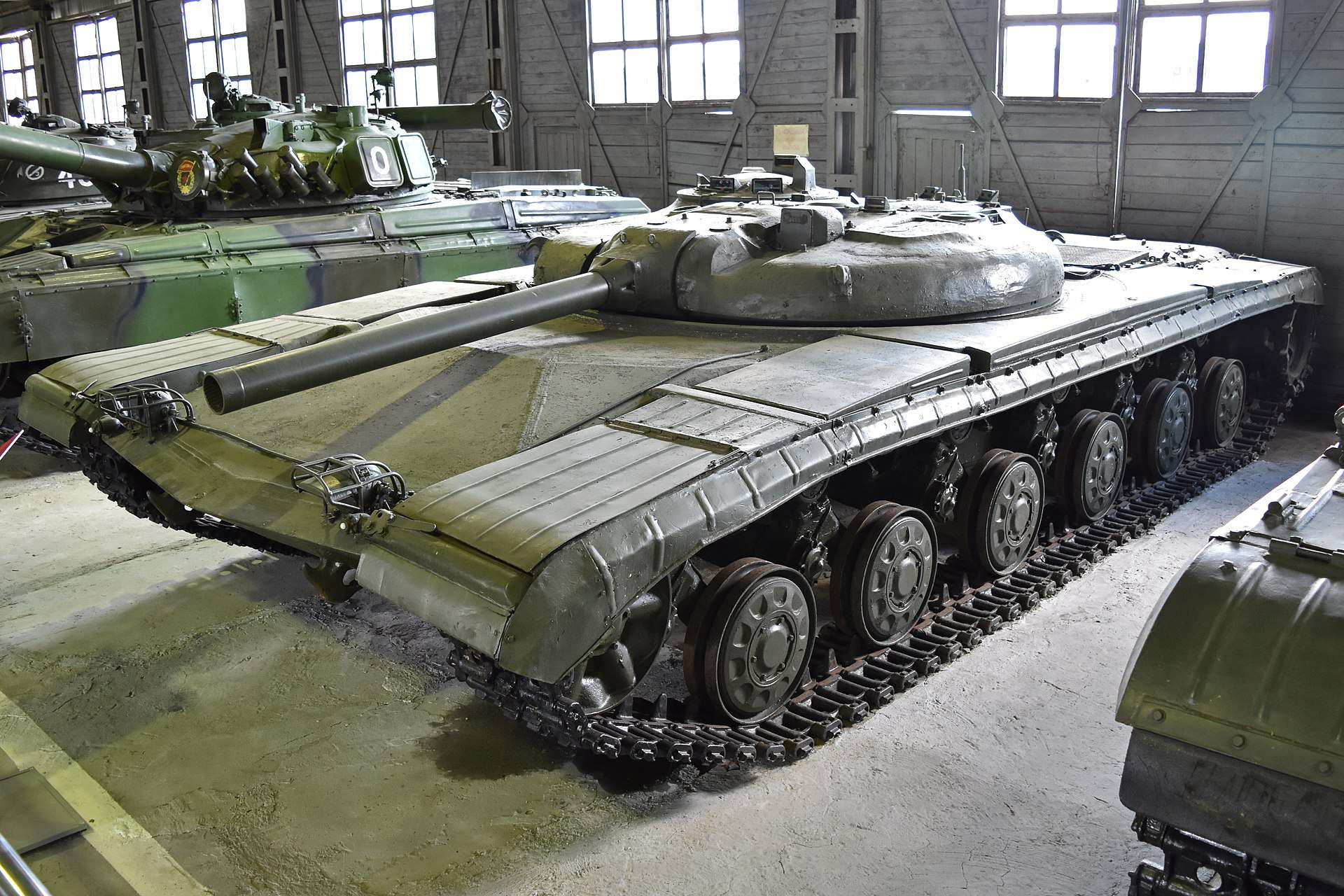 The hilariously sized Object 775. Image by Alan Wilson CC BY-SA 2.0.
The hilariously sized Object 775. Image by Alan Wilson CC BY-SA 2.0.
The driver sat in an independently rotating unit that kept him facing forward at all times, regardless of where the turret was in relation to the hull.
This arrangement allowed the entire vehicle to have a remarkably low silhouette. It was so low that it could be completely hidden by even the smallest disturbance in the terrain.
Impressively, the Object 775 was fitted with hydropneumatic suspension (one of the first, in fact) that could be manually adjusted, reducing its maximum height of 1.7 meters even further.
 At its maximum height the Object 775 measured just 1.7 meters tall. This could be reduced significantly by lowering the suspension.
At its maximum height the Object 775 measured just 1.7 meters tall. This could be reduced significantly by lowering the suspension.
The Object 775’s low height would have made it a tough target to hit, especially if was moving or at a distance. It certainly subscribed to the idea that not getting in the first place was the best form of protection.
However when rounds did start flying their way, the crew were protected by up to 120 mm of armor, an amount close to the recently abandoned heavy tanks.
Even with these levels of protection though, the Object 775 weighed less than 40 tons, thanks to its compact design.
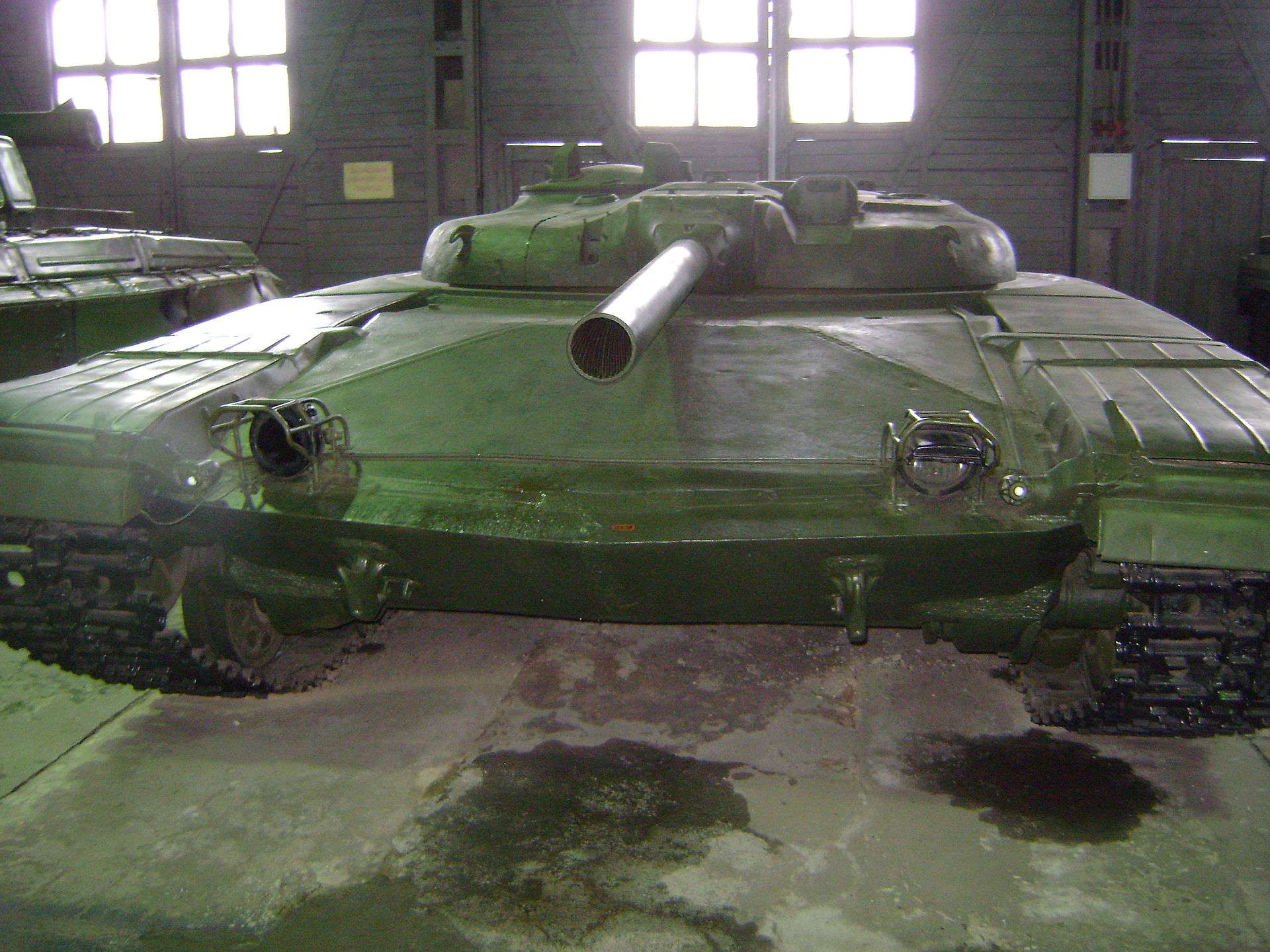 The frontal armor of the Object 775 was similar to heavy tanks of the previous decade. Image by Hornet Driver CC BY-SA 3.0.
The frontal armor of the Object 775 was similar to heavy tanks of the previous decade. Image by Hornet Driver CC BY-SA 3.0.
Powering it was the same 700 hp 5TDF diesel engine used in the T-64. This engine is a horizontally opposed 5 cylinder, which, like all horizontally opposed engines, was incredibly low profile.
This engine gave the Object 775 an excellent top speed of 43 mph (70 km/h). Its low silhouette, high speed and thick armor would have made it tough to hit, let alone kill.
Inside the comically flat turret is a 125 mm D-126 short barreled, rifled missile launcher – the very reason for the tank’s existence.
The Object 775 carried two types of missiles for the launcher; “Rubin”, an anti-tank guided missile, and “Bur”, a high explosive unguided rocket with a range of 9,000 meters.
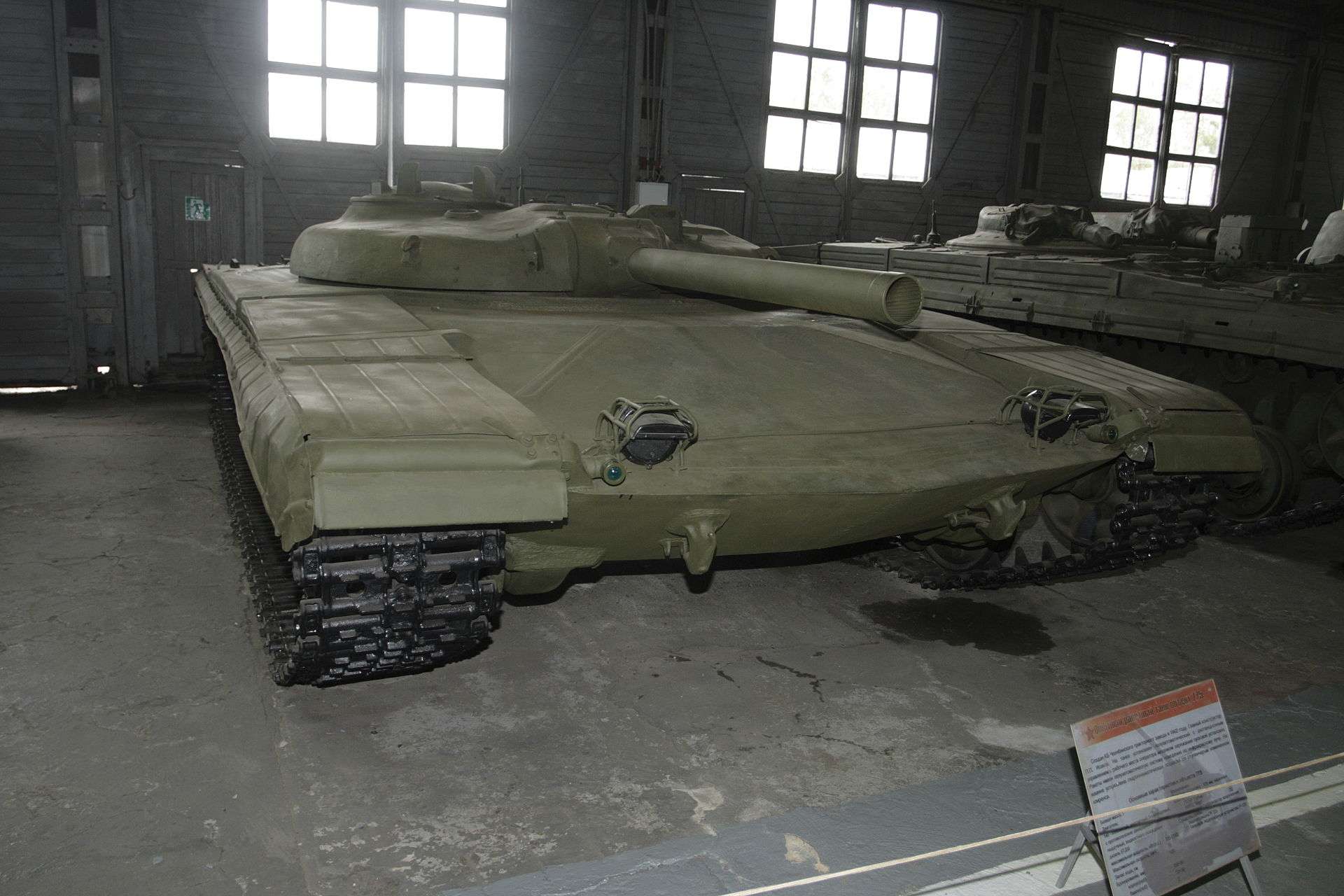 The D-126 missile launcher was loaded by an autoloader, removing the need for a third crew member. Image by Serguei S. Dukachev CC BY-SA 3.0.
The D-126 missile launcher was loaded by an autoloader, removing the need for a third crew member. Image by Serguei S. Dukachev CC BY-SA 3.0.
Both were loaded into the weapon via an autoloader.
The 1.5 meter long Rubin missile is a rather primitive system by today’s standards, but at the time it was able to knock out any tank on the planet.
It was semi-automatically guided by a 180 kg fire control system and the commander. Once fired, it travelled towards the target at 1,100 mph out to a maximum distance of 3-4000 meters.
It was capable of piercing 500 mm of steel.
Fate
Despite featuring many innovations, a number of inherent issues with the Object 775’s design meant it was never accepted into service.
Its low height – a critical part of its design – hampered crew efficiency and significantly reduced their visibility.
The missiles proved to be less effective than hoped in practice, and their guidance system was unreliable.
In fact, the entire tank was expensive and complex.
The investigations into missile tanks found that missile systems could complement conventional tank guns, but not completely replace them.
 The Object 775’s complex technologies contributed to its downfall. Image by Mike1979 Russia CC BY-SA 3.0.
The Object 775’s complex technologies contributed to its downfall. Image by Mike1979 Russia CC BY-SA 3.0.
Lessons and concepts learned from the Object 775 and similar vehicles directly contributed to the Soviets developing missiles that could be fired from tank guns.
It was mentioned at the start of this article that the Object 775 isn’t a very well known tank. This is curious, as in many ways it was analogous to the extremely famous MBT-70 project that occurred around the same time.
The MBT-70 also had hydropneumatic suspension, its driver in the turret and a missile launcher. Yet as history has shown, one is remembered while the other is forgotten.
